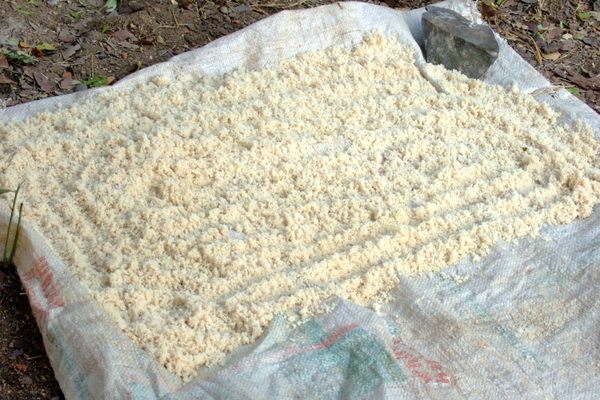Prepared Foods
Mosbolletjies
These buns from South Africa's Cape Winelands are traditionally leavened with the must used to make wine.
In 1688, around 175 French Huguenots, who were Protestants persecuted under Catholic rule, fled to what is now South Africa with aid from the Dutch East India Company. The imperial merchant power had founded Cape Town just three decades earlier as a supply station for its ships headed farther east. It sought experienced emigrant farmers to cultivate the land of the Western Cape province, where Khoikhoi pastoralists had grazed their herds prior to the arrival of the Dutch colonists. The Company supported the French Huguenots partly because of their shared Protestant beliefs, but also because it needed emigres with expertise in viticulture to supply its ships with wine.
The Huguenot families settled in the Cape Winelands area, where they put their winemaking experience to use. (The region’s Franschhoek valley, which is full of vineyards, means “French Corner” in Afrikaans.) During the harvest season, they made mosbolletjies, buttery, brioche-like buns leavened with the fermenting must — a mixture of pressed grape juice, seeds, skins and stems — produced during the early stages of winemaking. These “must buns” are traditionally flavored with whole anise seed. They’re typically served with butter and moskonfyt, a jam also made from must.
Outside of the grape harvest, when there’s no must available, bakers can substitute a liquid made by fermenting raisins, or use plain grape juice and regular yeast. The sweet, pull-apart bread is best eaten hot from the oven, but if leftovers survive, they’re dried as rusks to enjoy with coffee.
Where to Try It
-
La Motte Wine Estate
R45 Main Street, Franschhoek, 7690, South AfricaLook for mosbolletjies in this picturesque winery's farm shop during the harvest season.
Written By
 Susie Armitage
Susie Armitage
Sources
- www.winefrog.com/definition/144/must
- www.fondazioneslowfood.com/en/ark-of-taste-slow-food/must-bun/
- whc.unesco.org/en/tentativelists/6049/
- drizzleanddip.com/2016/03/08/i-learn-how-to-make-mosbolletjie-bread-at-de-wetshof-wine-estate/
- www.sahistory.org.za/dated-event/dutch-east-india-company-decides-send-french-huguenot-refugees-cape
- www.opendemocracy.net/en/beyond-trafficking-and-slavery/bitter-grapes-slavery-labour-and-memory-in-cape-winelands/
- www.museeprotestant.org/en/notice/the-huguenots-in-south-africa/
- backsberg.co.za/2011/03/15/moskonfyt-a-little-history-and-a-recipe/
- africhef.com/Mosbolletjies-and-Mosbeskuit-Recipes.html
- franschhoek.org.za/vignerons-de-franschhoek/
- southafrica.co.za/french-huguenots.html
- www.sahistory.org.za/article/khoikhoi
- www.wosa.co.za/WOSA-News/Blogs/Cape-Chatter/Must-must-must!/
- www.jstor.org/stable/3744920
- books.google.com/books?id=M_eCBAAAQBAJ&pg=PA302&lpg=PA302&dq=mosbolletjies+leavened&source=bl&ots=YB0XWKk5I6&sig=ACfU3U1_375IomId8grLvITqfCbmWwHuPQ&hl=en&sa=X&ved=2ahUKEwiC1ar7y6LiAhWh2FkKHaHzB184ChDoATAOegQIChAB#v=onepage&q=mosbolletjies%20leavened&f=false












